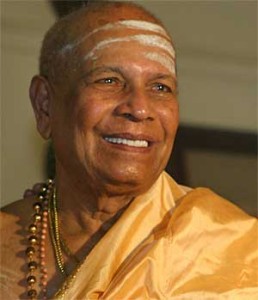About ashtanga yoga
Ashtanga is my favourite style of yoga. It’s a beautifully and perfectly constructed system which engage the whole body and the whole person, both physically and mentally in the practice. Everybody can find something in this type of practice, the ones looking for the physical aspects, such as more flexibility and strength; as well as the spiritual aspect of yoga. Although I teach different type of yoga classes, ashtanga is the closest to my heart.
So if here comes a really short intro about it.
Ashtanga vinyasa yoga or just ashtanga yoga, is a style of yoga codified by Sri K. Pattabhi Jois and his teacher T. Krishnamacharya. It is often promoted as a modern-day form of classical Indian yoga. Pattabhi Jois or Guruji began his yoga studies in 1927 at the age of 12, and by 1948 had established the Ashtanga Yoga Research Institute in India for teaching the specific yoga practice known as Ashtanga (Sanskrit for “eight-limbed”) Yoga.
The vinyasa
The term vinyāsa refers to the alignment of movement and breath, a method which turns static asanas into a dynamic and beautiful flow. The length of one inhale or one exhale dictates the length of time spent in the movement. Asanas (positions) are then held for a predefined number of breaths. In effect, attention is placed on the breath and the transition between the asanas rather than solely on achieving perfect body alignment in an asana.
The purpose of vinyasa is for internal cleansing. Synchronising the breath and movement heats the blood, cleaning and thinning it so that it may circulate more freely. Improved blood circulation relieves joint pain and removes toxins and disease from the internal organs. The sweat generated from the heat of vinyasa then carries the impurities out of the body. Through the use of vinyasa, the body becomes healthy, light and strong.
The breath

The breathing technique used during the practice is called ujjayi (victorious breath, fire breath, psychic breath). Both the inhalation and exhalation should be steady and even, the length of them should be the same length and between the inhalation and exhalation one should not pause or take any breaks. Over time, the length and intensity of the inhalation and exhalation should increase, such that the increased stretching of the breath initiates the increased stretching of the body. Long, even breathing also increases the internal fire and strengthens and purifies the nervous system through that the whole body.
The bandhas
Bandha means “lock” , technically contracting groups of muscles one “lock” and “guide” the created energy. Bandhas are essential components of the ujjayi breathing technique. The purpose of bandha is to unlock (pranic) energy. We use 3 bandha during this breath, the first is the mula bandha is the muscles around the perineum, uddiyana bandha is the lower abdominal lock. Both bandhas “seal in energy, give lightness, strength and health to the body, and help to build a strong internal fire”. Mula bandha operates at the root of the body to seal in prana internally for uddiyana bandha to direct the prana (nergy) upwards through the nadis (energy channels). The third is jalandhara bandha is the “throat lock”, which occurs spontaneously in a subtle form in many asanas due to the dristi (“gaze point”), or head position. This lock prevents pranic energy from escaping and stops any build-up of pressure in the head when holding the breath. Without bandha control, breathing will not be correct, and the asanas will give no benefit. They even say “without the breath, it’s just circus or gymnastics”.

The mantras
The Ashtanga practice is traditionally started and ended with a mantra, singed together with the teacher or alone.
[columns] [span6]
The opening mantra
vande gurūṇāṁ caraṇāravinde saṁdarśitasvātmasukhāvabodhe
niḥ śreyase jāṅ̇galikāyamāne saṁsāra hālāhala mohaśāntyai
ābāhu puruṣākāraṁ śaṅ̇khacakrāsi dhāriṇam
sahasra śirasaṁ śvetam praṇamāmi patañjalim
[/span6][span6]
Translation
I bow to the lotus feet of the gurus,
The awakening happiness of one’s own self revealed,
Beyond better, acting like the jungle physician,
Pacifying delusion, the poison of samsara.
Taking the form of a man to the shoulders,
Holding a conch, a discus, and a sword,
One thousand heads white,
To Patanjali, I salute.
[/span6][/columns]
[columns] [span6]
The closing mantra
svasti prajābhyaḥ paripālayantāṁ nyāyena mārgeṇa mahīṁ mahīśāḥ
gobrāhmaṇebhyaḥ śubhamastu nityaṁ lokāḥ samastāḥ sukhino bhavantu
[/span6][span6]
Translation
May prosperity be glorified,
may rulers (administrators) rule the world with law and justice,
may divinity and erudition be protected.
May all beings be happy and prosperous
[/span6][/columns]
